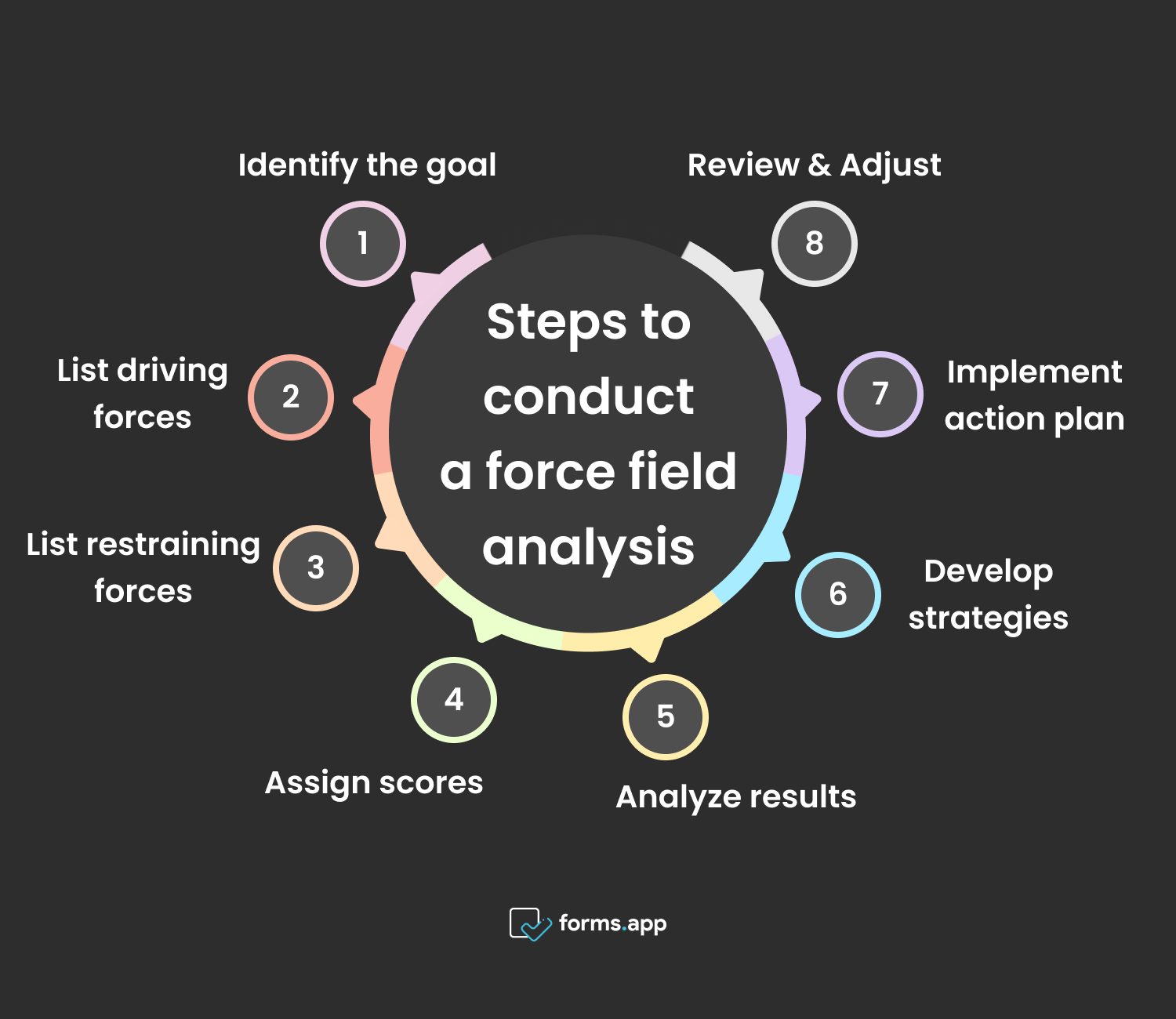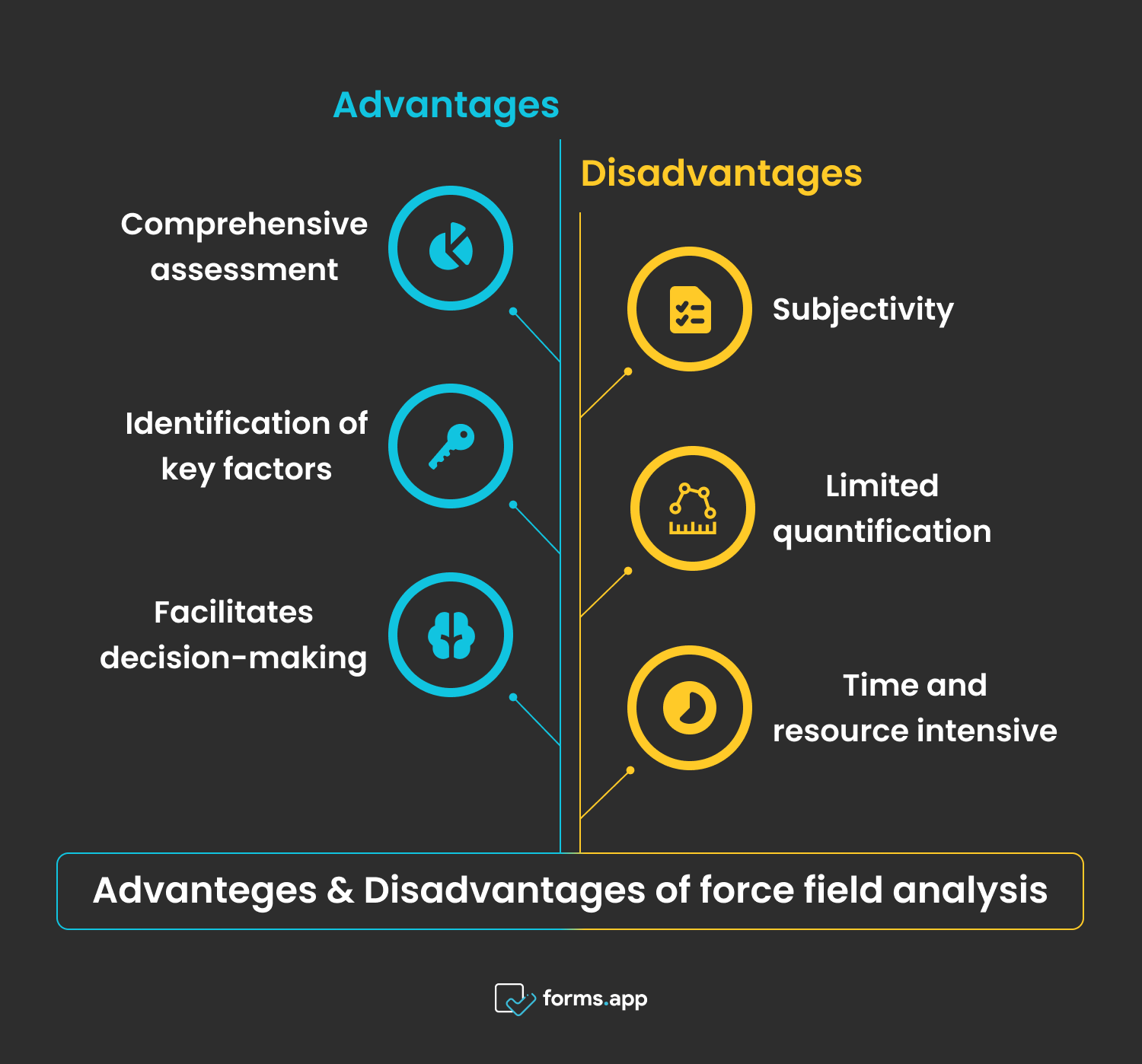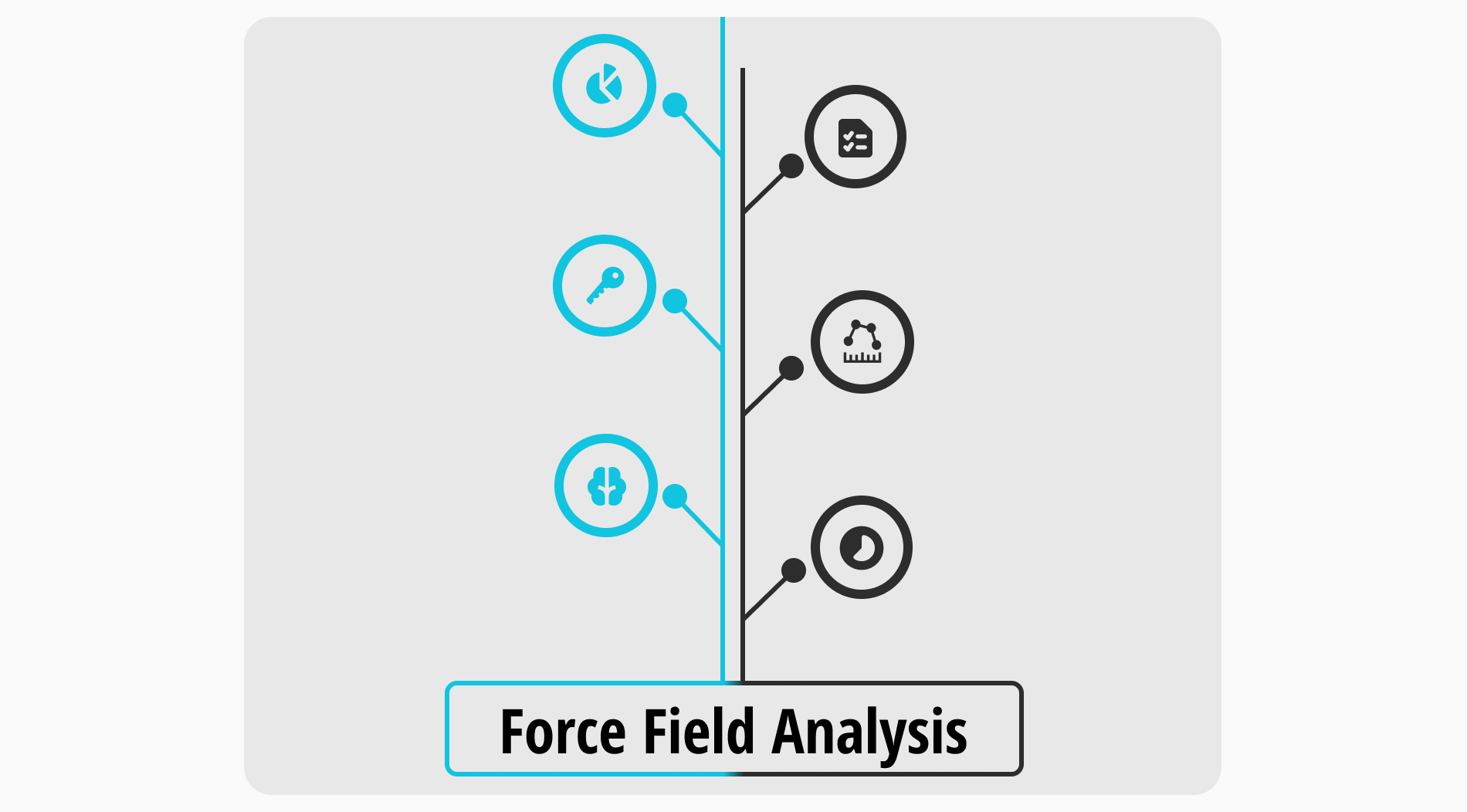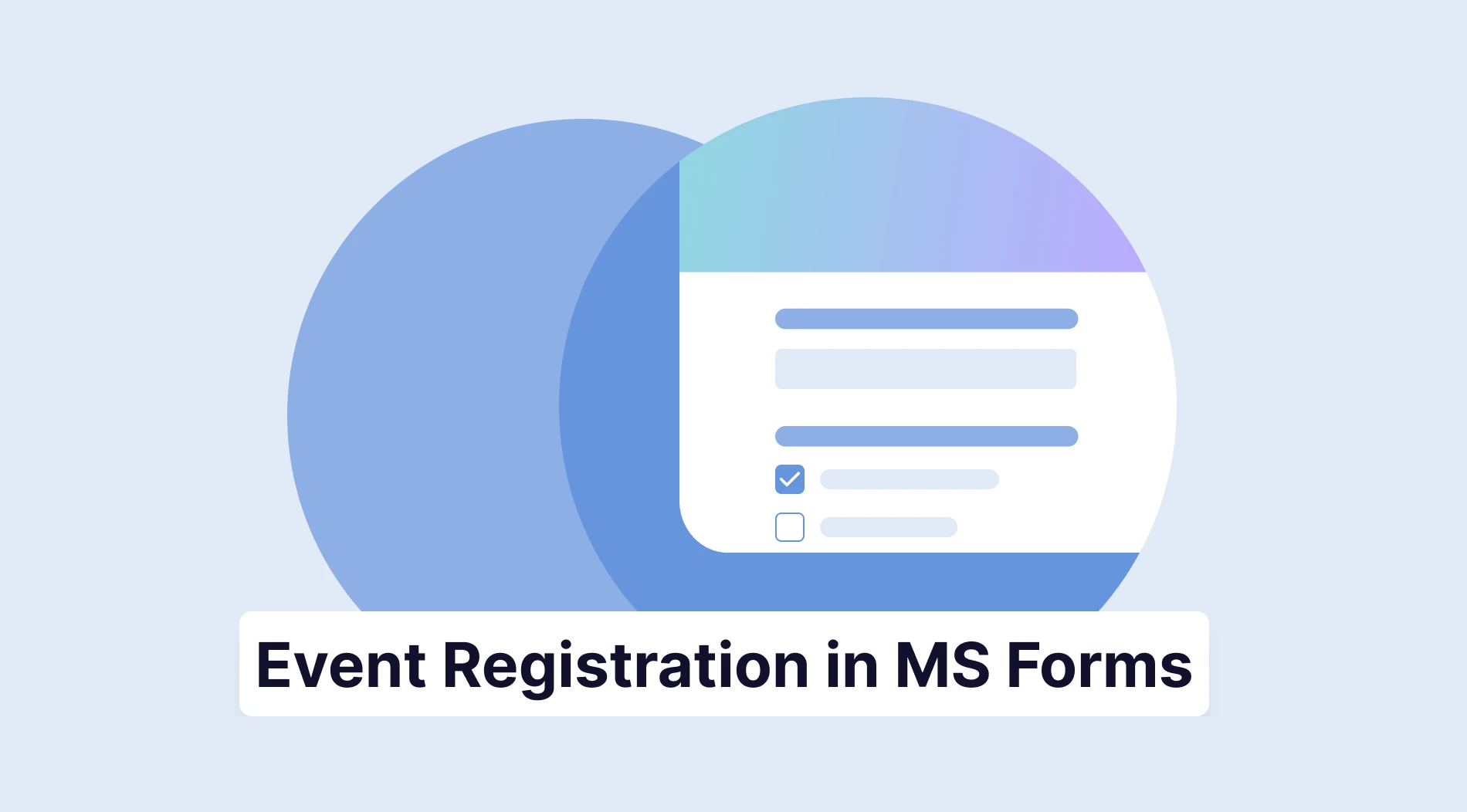In today’s dynamic landscape, decision-making and problem-solving models are paramount. From navigating complex business challenges to adapting to rapidly evolving technologies, mastering these techniques is crucial for success in the business world. Businesses use these methods and analyses to empower themselves to achieve their objectives effectively.
We will delve into one of these decision-making models, the Force Field analysis. We will cover the steps to conduct the analysis and give examples. We will also discuss its advantages and disadvantages and answer some frequently asked questions about it. Now, let’s discover the force!
What is force field analysis?
Force field analysis is a decision-making tool and problem-solving model developed by Kurt Lewin in the 1940s and helps identify and analyze the forces that support or oppose a particular decision, change or goal.
By systematically examining both the driving and restraining forces, individuals and organizations can gain deeper insights into the complexities surrounding their decisions or goals.
This method enables informed decision-making by highlighting the potential obstacles and opportunities inherent in any course of action. Additionally, by visualizing these forces, stakeholders can collaboratively explore strategies to maximize positive outcomes and minimize barriers. Therefore, it is a valuable tool for navigating the complexities of change and achieving desired outcomes.
In the context of SEO, it could be used to evaluate the feasibility and potential impact of implementing certain optimization strategies. For example, driving forces could include factors like changes in search engine algorithms. The restraining forces might include budget limitations or technical constraints. By conducting a force field analysis, SEO professionals can make more informed decisions and develop more effective strategies.
Steps to conduct a force field analysis
There are several steps to take to conduct a proper force field analysis model. Following these steps will help you list the driving forces and restraining forces. This way, you can benefit from this management tool in the most effective way. Here are the steps:

Force field analysis steps
1- Identify the goal
Begin by clearly defining the specific goal or desired outcome that you want to achieve through the force field analysis. This step is crucial as it sets the direction for the entire process. Take time to ensure that the goal is specific, measurable, relevant, and time-bound (SMART).
2- List driving forces
Once you establish the goal, identify and list all the factors or elements that are driving or supporting the achievement of the goal. These driving forces are typically internal or external factors facilitating progress towards the desired outcome. Examples of driving forces may include supporting stakeholders, adequate resources, favorable market conditions, or technological advancements.
3- List restraining forces
In contrast to driving forces, restraining forces are factors or elements hindering or opposing the achievement of the goal. Similar to driving forces, restraining forces can be internal or external to the organization or situation being analyzed. Examples of restraining forces may include a lack of resources, resistance to change, regulatory constraints, or competing priorities.
4- Assign scores
After compiling lists of driving and restraining forces, assign scores or ratings to each factor to indicate their relative strength or magnitude. This step helps quantify the impact of each force on the goal and provides a basis for comparing and prioritizing them. Scores can be assigned using numerical scales, such as 1 to 5 or 1 to 10.
5- Analyze results
Once scores are assigned to driving and restraining forces, calculate the net force by subtracting the total strength of restraining forces from the total strength of driving forces. A positive result indicates that the driving forces outweigh the restraining forces, suggesting a higher likelihood of goal attainment. Conversely, a negative result suggests that there are still obstacles to achieving the goal.
6- Develop strategies
Based on the analysis of driving and restraining forces and the resulting net force, formulate strategies to leverage driving forces and mitigate restraining forces to maximize the likelihood of goal attainment. Strategies may involve strengthening the driving forces and weakening the restraining forces. Study the factors that affect your business. Consider both short-term and long-term actions to address the identified factors effectively.
7- Implement action plan
Once you develop the strategies, create a detailed action plan outlining the specific steps, responsibilities, timelines, and resources required to implement the strategies effectively. Ensure clear communication and alignment across stakeholders involved in executing the action plan. Regularly monitor progress in your action planning and make adjustments as necessary to stay on track toward achieving the goal.
8- Review & Adjust
Continuously review and reassess the force field analysis and action planning. This will help you evaluate the effectiveness of implemented strategies and the changing dynamics of driving and restraining forces over time. Periodically update the analysis to incorporate new information, insights, or changes in the external environment. Use feedback to refine strategies and obtain the desired state.
Force field analysis examples
We have seen the steps to conducting a proper force field analysis. Now, to understand this model better, we will see two hypothetical scenarios in which companies will use this model and obtain positive results. You can also create your own force field analysis template based on them. Let’s look at the examples of the force field analysis technique:
1- Casper
Casper, a renowned laptop company, decided to use force field analysis to streamline its product development process (the goal). They identified driving forces like customer demand for several designs and advanced features, along with restraining forces such as budget constraints and existing production limitations.
To overcome these challenges, Casper invested in innovative manufacturing technologies to enhance efficiency and reduce costs. They also collaborated closely with suppliers to negotiate better deals. By addressing both driving and restraining forces, Casper successfully completed a force field analysis and launched a new line of laptops, meeting customer expectations while maintaining profitability.
2- Epson
Epson, a prominent electronics company, employed force field analysis to renew its marketing strategy for a new line of printers (the goal). They identified driving forces, such as market demand for eco-friendly and cost-effective printing solutions, alongside restraining forces like limited brand recognition in certain demographics and fierce competition from established rivals.
To mitigate these challenges, Epson invested in targeted advertising campaigns to increase brand visibility and highlight the eco-friendly features of their printers. They also focused on developing strategic partnerships with retailers to expand their distribution network. By addressing both forces, Epson successfully launched new printers and reinforced its reputation for innovation and sustainability.
Advantages and disadvantages of force field analysis
Like every model, the force field analysis has advantages and disadvantages. In this section, we will cover both of them to provide a comprehensive understanding of the outcomes of using this valuable tool. Let’s look at the advantages and disadvantages:

Pros & Cons of force field analysis
1- Advantages
- Comprehensive assessment: It provides a structured approach to analyze both driving and restraining forces, offering a holistic view of a situation or problem.
- Identification of key factors: It helps in identifying the most influential factors affecting a situation, enabling businesses to prioritize their efforts and resources accordingly.
- Facilitates decision-making: By visually representing the forces at play, it aids in decision-making by highlighting areas where intervention or change is needed to achieve desired outcomes.
2- Disadvantages
- Subjectivity: The analysis heavily relies on subjective judgments and opinions, which can introduce bias and lead to inaccurate assessments.
- Limited quantification: It does not provide quantitative measurements, making it challenging to objectively compare the magnitude of different forces or track changes over time.
- Time and resource intensive: Conducting a thorough force field analysis requires time, resources and expertise, which may not always be feasible for organizations with limited capacity.
Frequently asked questions about a force field analysis
We have covered many aspects of the force field analysis and learned a great many things about it, including its steps, examples, advantages, and disadvantages. Now, let’s take a look at some of the most frequently answered questions about the force field analysis:
Force field analysis finds applications across various industries, such as business management, project planning, and organizational change. It helps businesses assess factors influencing decision-making, develop effective strategies, and navigate complex situations by identifying both driving and restraining forces and determining the best course of action.
Force field analysis was developed by the psychologist Kurt Lewin, a renowned psychologist, in the 1940s. His pioneering work in social psychology contributed significantly to the understanding of group dynamics, organizational behavior, and change management. Force field analysis is one of his notable contributions to the field.
Common causes of resistance to change include fear of the unknown, loss of control, perceived lack of benefits, disruption of routines, and resistance to cultural or organizational norms. Understanding these factors is crucial for effectively managing change and fostering acceptance and cooperation within an organization.
Final words
In conclusion, the force field analysis is a valuable tool for analyzing and managing change in various business contexts. By identifying driving and restraining forces, companies can gain insights into the dynamics at play. In this article, we have covered this useful model in detail including steps to take, advantages and disadvantages. You can now benefit from it in your business!
Fatih is a content writer at forms.app and a translator specializing in many text domains, including medical, legal, and technical. He loves studying foreign languages. Fatih especially likes to create content about program management, organizational models, and planning tools.



